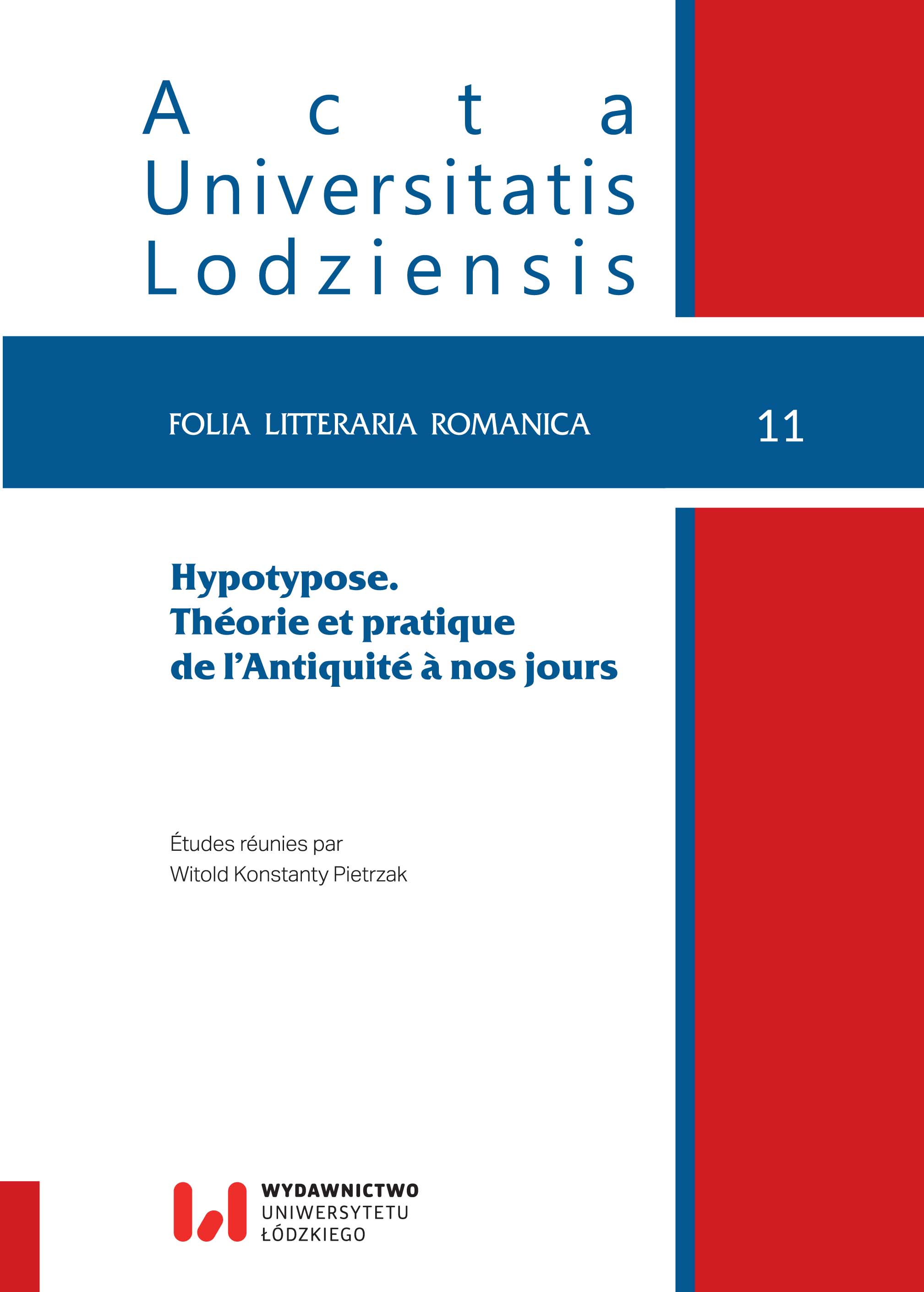Les Hors nature i La Jongleuse autorstwa Rachilde: między realistycznym przedstawieniem a zobrazowaniem niemożliwego
DOI:
https://doi.org/10.18778/1505-9065.11.16Słowa kluczowe:
hypotypoza, Rachilde, przedstawienie, powieśćAbstrakt
Pełen obrazowych porównań styl Rachilde zachęca do przyjrzenia się występujących w jej powieściach hypotypozom. Ciekawe przykłady tej figury spotykamy w dwóch utworach: Les Hors nature i La Jongleuse. W obu przypadkach chodzi o sceny odważne erotycznie. Ze względu na cenzurę obyczajową Rachilde musi jednocześnie działać na wyobraźnię czytelnika siłą swoich obrazów, unikać jasnych sformułowań i uciekać się do sugestii. Liczne figury stylistyczne: elipsy, peryfrazy, metafory, zaburzają jasny przekaz, który, według Yves’a Le Bozeca, stanowi jeden ze składników hypotypozy. Artykuł stawia sobie zatem za cel omówienie budowy tej figury u Rachilde. — Z drugiej jednak strony wybrane sceny mają posłużyć jako demonstracja teorii miłości idealnej – niemożliwej – którą powieściopisarka zawarła w swoich powieściach. Wykraczając poza ramy teoretycznego dyskursu, bohaterowie reżyserują swoje wystąpienia na oczach zamarłych z oburzenia widzów. Ten rodzaj przestawienia teatralnego wzmacnia efekt hypotypozy, a reakcje świadków naocznych zastępują zwroty zachęcające do przyjrzenia się scenie, częste w hypotypozach teatralnych. Tego rodzaju połączenie ma głęboko wstrząsnąć czytelnikiem. — Ostatecznie warto się zastanowić, czy Rachilde, niezależnie od pierwotnych zamierzeń aksjologicznych, nie uległa pokusie prowokacji za pomocą szokujących obrazów i czy potęga stworzonych przez nią hypotypoz nie stanowi ostatecznie jednego z jej podstawowych osiągnięć.
Pobrania
Bibliografia
Barthes, Roland, « L’Homme racinien », Sur Racine, Paris, Seuil, 1963, p. 28-34
Google Scholar
Barthes, Roland, « L’Effet de réel », Communications, no 11, 1968, p. 84-89
Google Scholar
Hawthorne, Melanie C., Rachilde and French Women’s Authorship. From Decadence to Modernism, Lincoln and London, Nebraska University Press, 2001
Google Scholar
Iser, Wolfgang, L’Acte de lecture. Théorie de l’effet esthétique [1976], trad. par Evelyne Sznycer, Bruxelles, Pierre Mardaga, 1985
Google Scholar
Le Bozec, Yves, « L’hypotypose : un essai de définition formelle », L’Information Grammaticale, no 92, 2002, p. 3-7
Google Scholar
Le Bozec, Yves, « Les frontières de l’hypotypose : le songe d’Athalie et la prophétie de Joad », L’Information Grammaticale, no 100, 2004, p. 26-30
Google Scholar
Leplatre, Olivier, « ’Ravi d’une si belle vue’. Le seuil du regard dans le théâtre de Racine », in : Le Regard à l'œuvre. Lecteurs de l'image, spectateurs du texte, sous la dir. de Teresa Orrechla- Havas, Anne Surgers, Marie-José Tramuta, Baptiste Villenave, Julie Wolkenstein, Université de Caen, 2014, p. 39-51
Google Scholar
Molinié, Georges, Dictionnaire de rhétorique, Paris, Le Livre de Poche, 1997
Google Scholar
Morier, Henri, Dictionnaire de poétique et de rhétorique, Paris, PUF, 1998
Google Scholar
Rachilde, Les Hors nature. Mœurs contemporaines, Paris, [Mercure de France, 1897], Éditions Robert Laffont, 1999 (Romans fin-de-siècle. 1890-1900, Jean Bertheroy, Jean Lorrain, Louis Dumur, Catulle Mendès, Georges Eekhoud, Rachilde, Camille Mauclair, Jean de Tinan. Textes établis, présentés et annotés par Guy Ducrey)
Google Scholar
Rachilde, La Jongleuse, Paris, [Mercure de France, 1900], Des femmes, 1982, présentation de Claude Dauphiné
Google Scholar
Rachilde, Mme Adonis, Paris, É. Monnier, 1888
Google Scholar
Staroń, Anita, Au carrefour des esthétiques. Rachilde et son écriture romanesque. 1880-1913, Łódź, Wydawnictwo Uniwersytetu Łódzkiego, 2015
Google Scholar
Voisin, Bérengère (dir.), Fiction et vues imageantes : typologie et fonctionnalités, Studia Romanica Tartuensia VII, Tartu, Université de Tartu / Centre d’Études Francophones Robert Schuman, 2008
Google Scholar
Pobrania
Opublikowane
Jak cytować
Numer
Dział
Licencja

Utwór dostępny jest na licencji Creative Commons Uznanie autorstwa – Użycie niekomercyjne – Bez utworów zależnych 4.0 Międzynarodowe.













